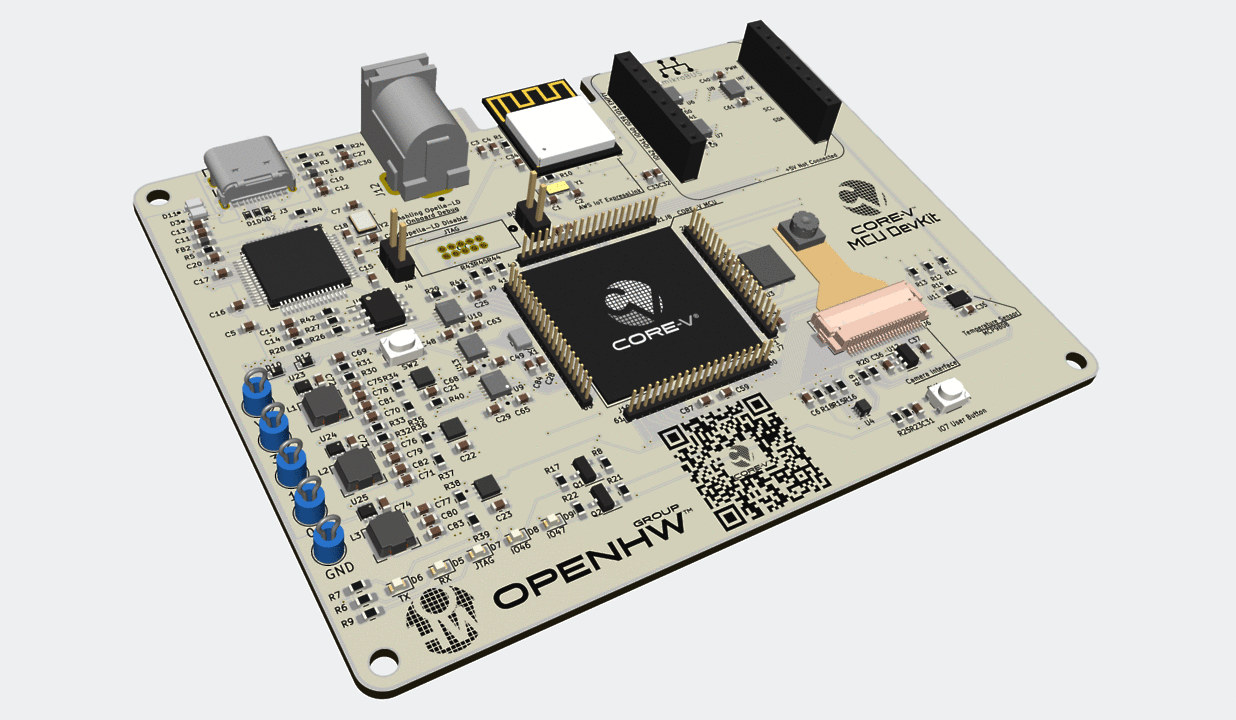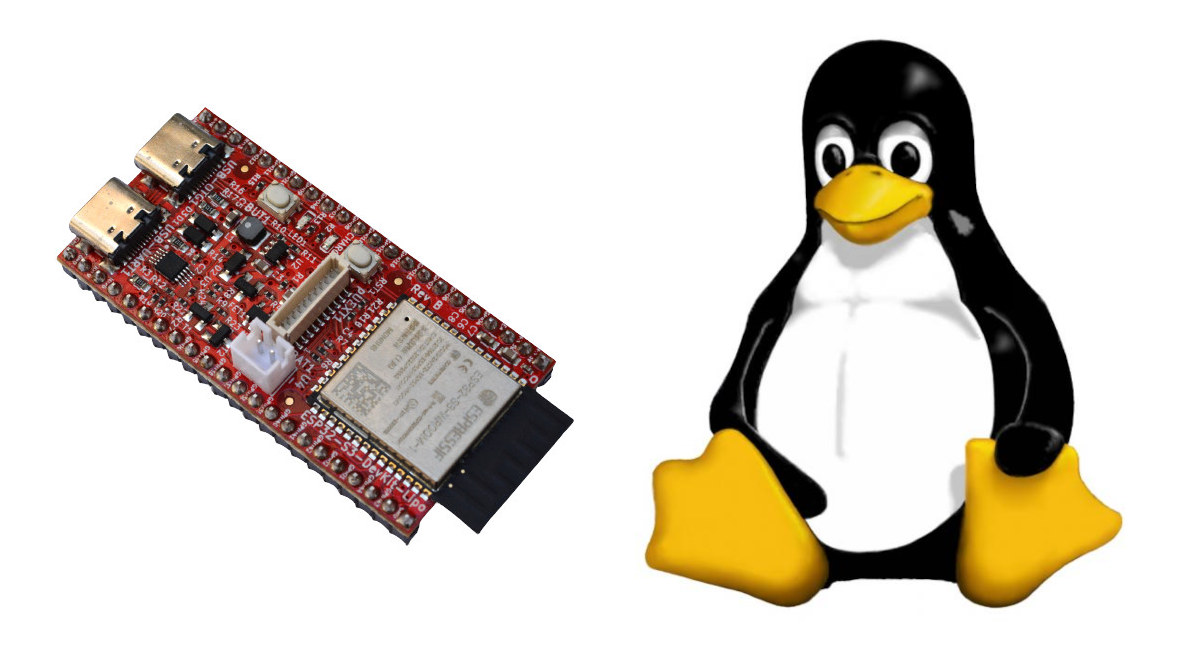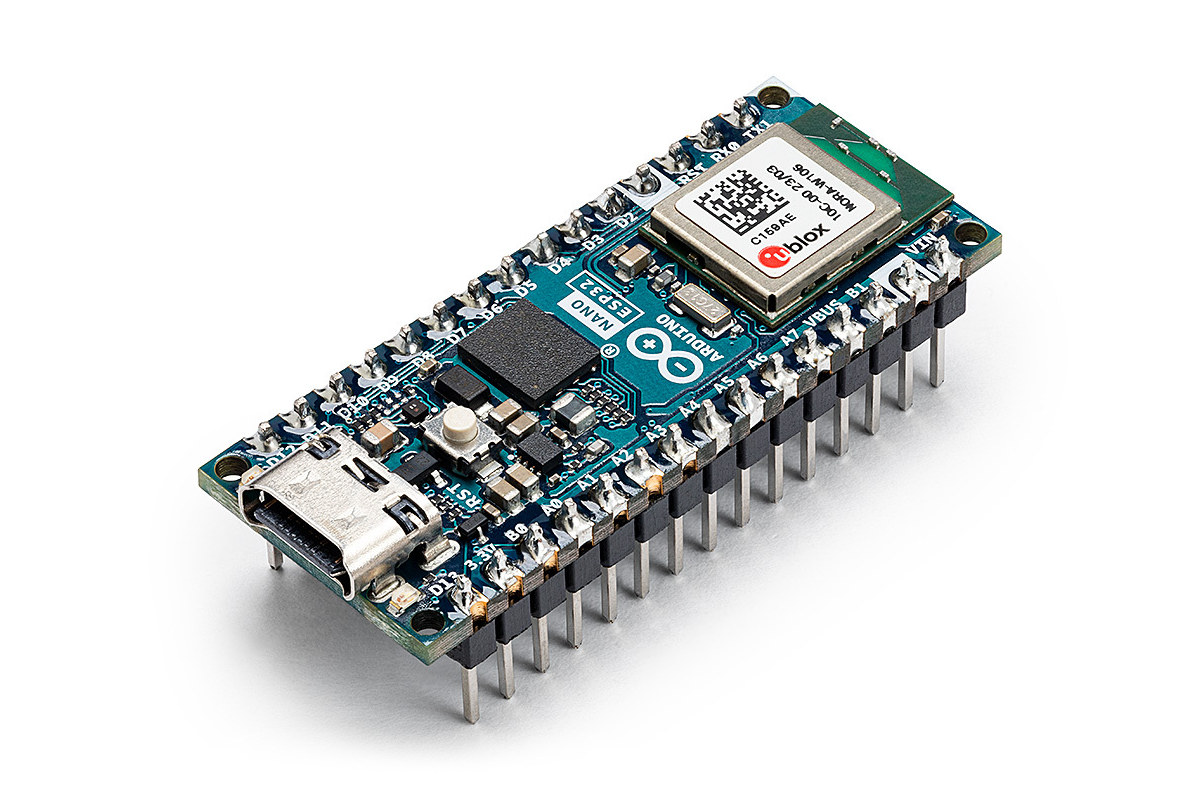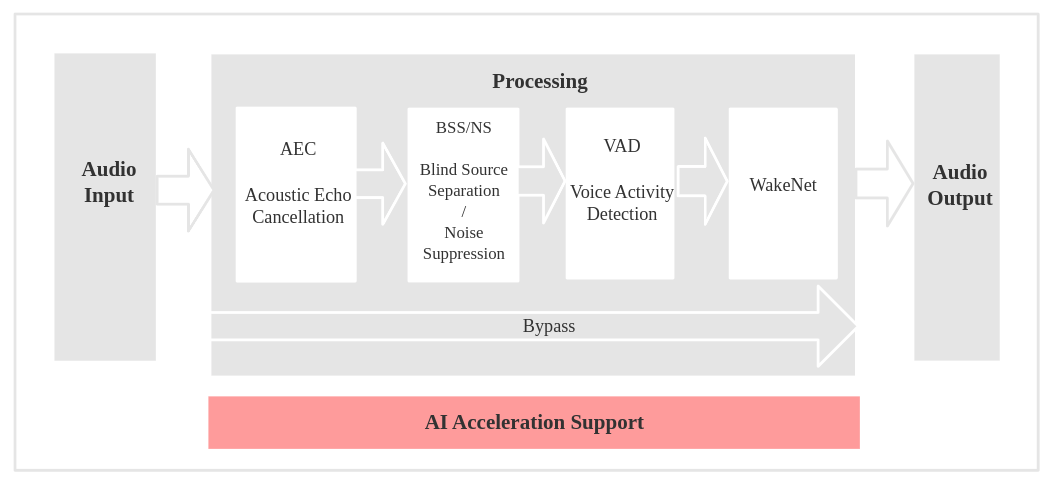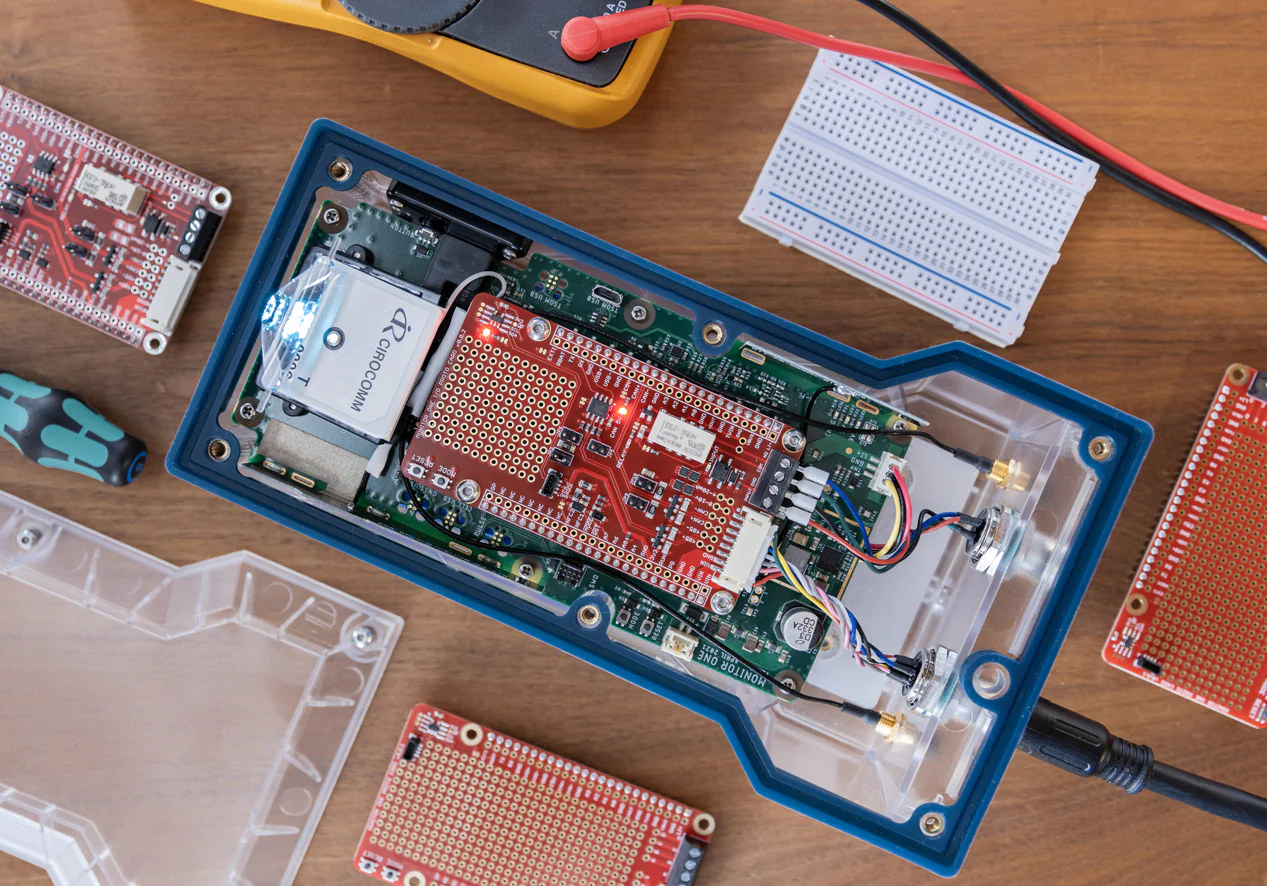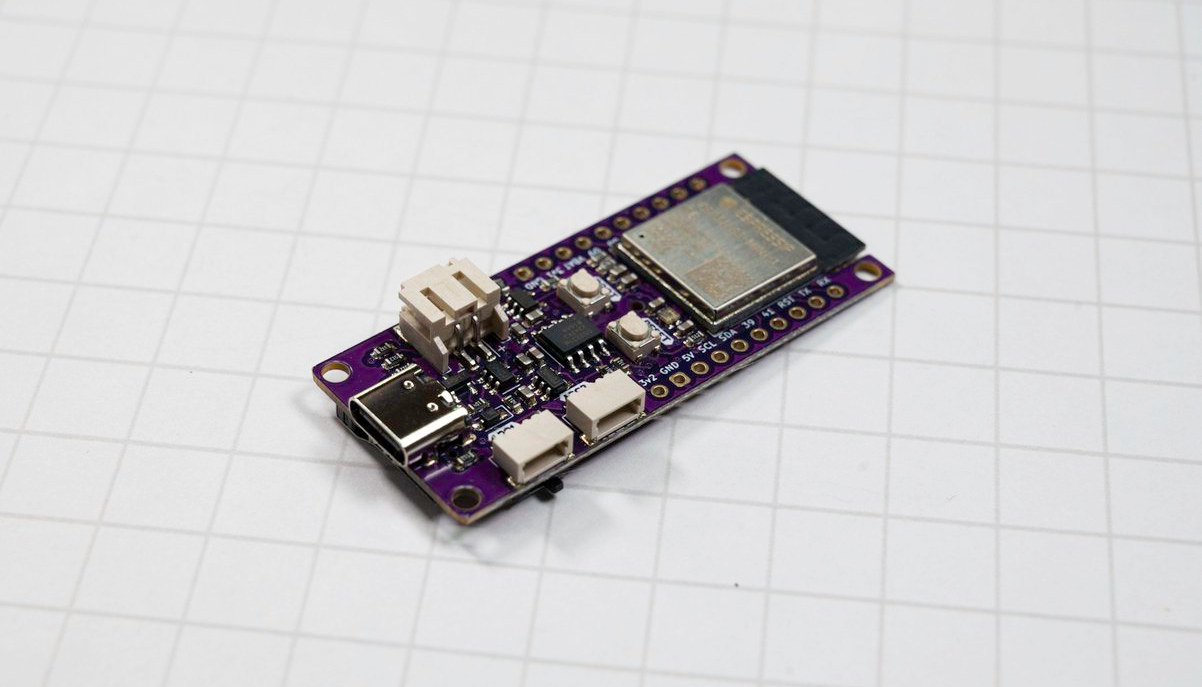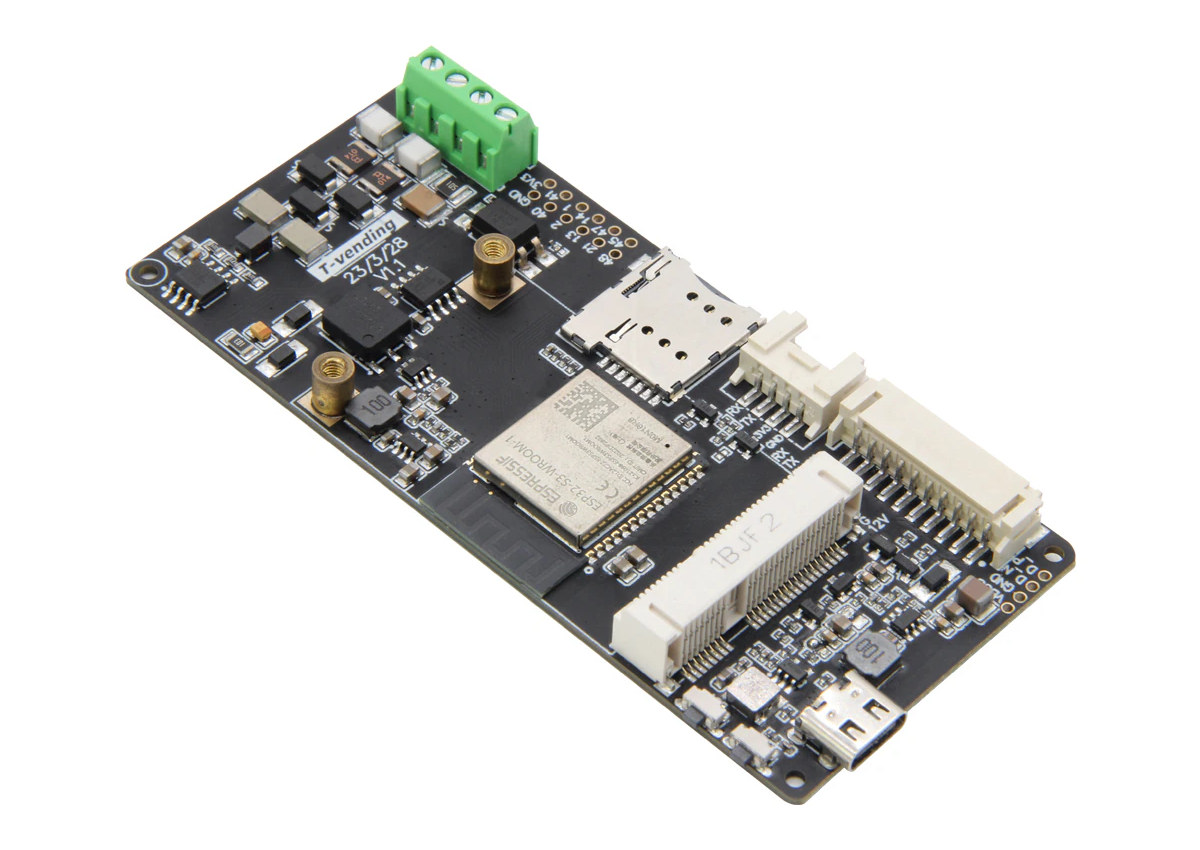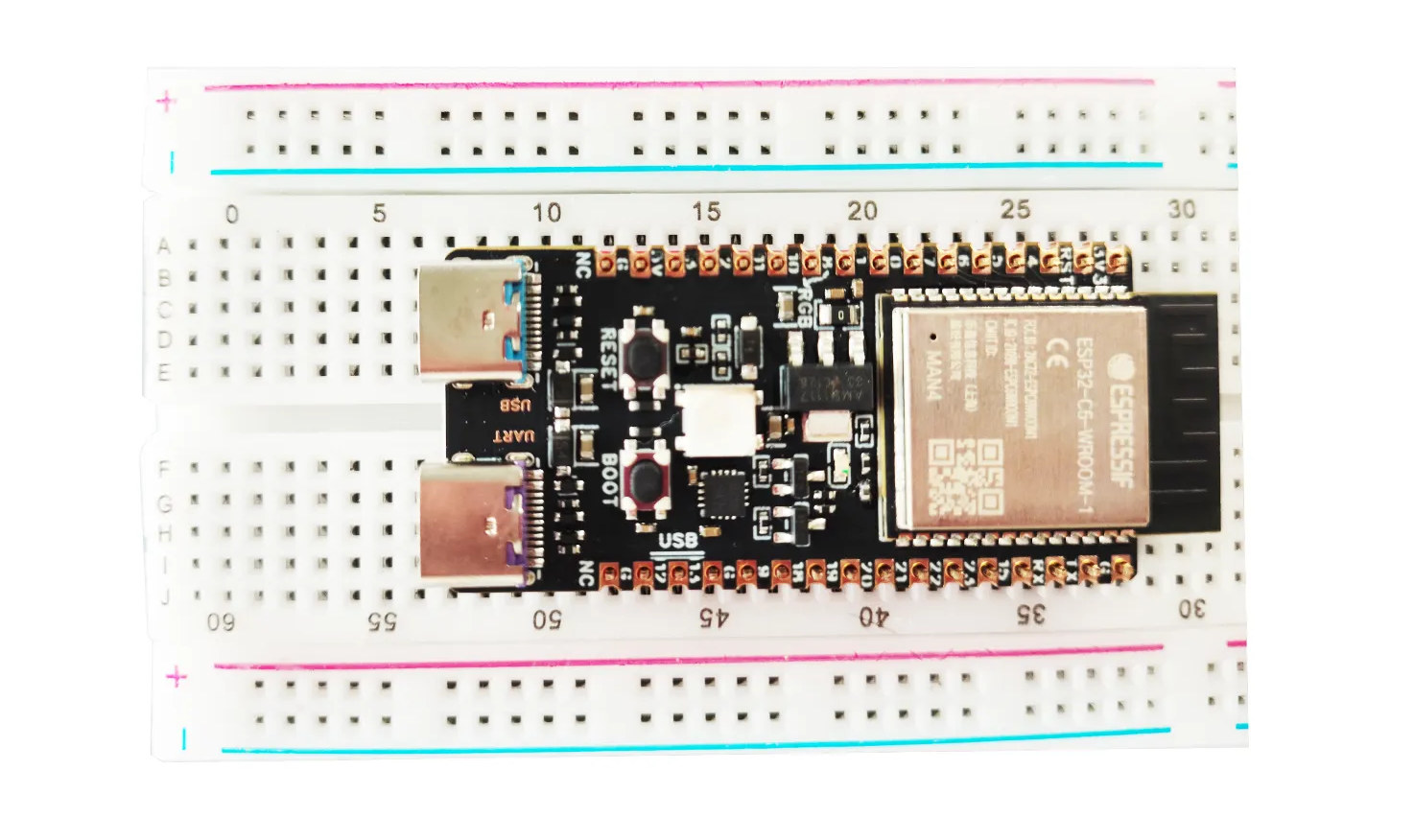The CORE-V MCU DevKit is an open-source hardware board based on the CORE-V microcontroller featuring the open-source OpenHW CV32E40P0 RISC-V MCU core and a Quicklogic ArticPro 2 eFPGA. The board offers wireless connectivity to Amazon AWS through an ESP32-C3 AWS IoT ExpressLink module, a MikroBus connector for expansion, a VGA camera module, JTAG and serial debugging, as well as a temperature sensor and a few buttons. The development kit can be powered by its USB Type-C port (5V) or a DC jack taking 5V to 18V DC. CORE-V MCU devkit specifications: Microcontroller – CORE-V MCU OpenHW CV32E40P RISC-V processor core (in-order 4-stage RISC-V RV32IMFCXpulp CPU based on RI5CY from PULP-Platform) with 512KB SRAM, boot ROM Quicklogic ArticPro 2 eFPGA Storage – 4MB QSPI flash Wireless – Espressif AWS IoT ExpressLink Module for AWS IoT cloud interconnect Camera – Himax HM01B0 ultra-low-power QVGA (320×240) CMOS image sensor as found in the […]
12 Euros ESP32-S3-DevKit-LiPo board runs Linux 6.3
Olimex ESP32-S3-DevKit-LiPo is a new open-source hardware ESP32-S3 board with 8MB flash, 8MB PSRAM, as well as LiPo battery and JTAG support that can run Linux 6.3, or the more traditional Arduino or MicroPython firmware. The board is based on the ESP32-S3-WROOM-1-N8R8 module, features two USB-C ports for power, programming, and JTAG debugging, plenty of expansion with two rows of I/Os plus a pUEXT connector, Reset and Boot buttons, and a couple of LEDs. ESP32-S3-DevKit-LiPo specifications: Wireless module – Espressif ESP32-S3-WROOM-1-N8R8 with SoC – ESP32-S3 dual-core LX7 microprocessor @ up to 240 MHz with Vector extension for machine learning, WiFi 4 & Bluetooth 5 LE/Mesh Memory – 8MB OSPI PSRAM Storage – 8MB QSPI flash PCB antenna Dimensions – 25.5 x 18.0 x 3.1 mm USB 1x USB Type-C OTG port also used for JTAG/Serial 1x USB Type-C port for USB-serial programming and power Expansion 2x 22-pin GPIO headers pUEXT […]
ESP32-S3 based Arduino Nano ESP32 board supports Arduino and MicroPython programming
The Arduino Nano ESP32 is an ESP32-S3-based WiFi and Bluetooth microcontroller board designed for IoT applications for hobbyists and enterprise use cases. The new Nano board comes with 8 MB PSRAM and 16 MB flash storage and can be programmed with either the Arduino or MicroPython languages. It’s not the first ESP32 board from Arduino, as the Nano RP2040 Connect pairs a Raspberry Pi RP2040 MCU with an ESP32 module from u-Blox and the just-released Arduino UNO R4 WiFi marries a Renesas RA4M1 Arm Cortex-M33 MCU with an ESP32-S3-MINI-1 module. But the Arduino Nano ESP32 is different since it’s the first ESP32 board from Arduino where the Espressif chip is the only microcontroller onboard and handles both wireless connectivity and GPIOs. Arduino Nano ESP32 specifications: Wireless module – u-Blox NORA-W106-10B with MCU – ESP32-S3 dual-core Xtensa LX7 microcontroller @ up to 240 MHz with vector extensions, 512KB SRAM, 384KB ROM, […]
Espressif ESP-SR enables on-device speech recognition framework on ESP32-S3 and ESP32 WiSoCs
Espressif ESP-SR is a speech recognition framework enabling on-device speech recognition on ESP32 and ESP32-S3 wireless microcontrollers with the latter being recommended due to its vector extension for AI acceleration and larger, high-speech octal SPI PSRAM. The ESP-SR framework was first released on December 17, 2021 with version 1.0, before the v1.20 update was introduced in March of this year, but I only found out about ESP-SR offline speech recognition solution through a tweet by John Lee showing an ESP-SR demo video by @ThatProject. Comrades of the world, liberate your hands from the chains of typing and touching germy switches! Embrace the revolutionary power of speech recognition with ESP32-S3 + ESP-SR. Let your words flow freely, for the proletariat shall not be silenced by keyboards or bourgeois input… pic.twitter.com/bm3udteB3o — John Lee (@EspressifSystem) July 15, 2023 I initially was confused since ESP32 boards have supported speech recognition for years using […]
Monitor One – A customizable cellular IoT gateway for industrial equipment monitoring
Particle’s Monitor One Developer Edition is a customizable cellular IoT gateway for monitoring industrial equipment packaged in an IP67 rugged enclosure with reference firmware, and suitable for rapid prototyping with support for a range of I/Os and sensors, and even a prototyping area for to solder your own circuitry. Like the company’s earlier Tracker One asset tracker, the Monitor One is based on the Tracker SoM with a Nordic Semi nRF52840 Arm Cortex-M4 wireless SoC for Bluetooth connectivity, a Quectel LTE Cat M1 (North America) or Cat 1 with 3G and 2G fallback (EMEA), u-blox Neo-M8U GNSS module, and an ESP32 for WiFi location support. The new customizable cellular IoT gateway still integrates with the Particle IoT PaaS (Platform as a Service), and the company also provides developer tools. The Monitor One Developer Edition is comprised of the following items: Monitor One base model fitted with a Particle Tracker SoM […]
The Bee Data Logger ESP32-S3 board comes with RTC, microSD slot, and two Qwiic connectors for sensors
A few months ago, SparkFun released the “Datalogger IoT – 9DoF” no-code platform based on ESP32 with some built-in sensors, a microSD card, and two Qwiic connectors to add sensors in order to perform data logging with minimal to no coding. Smart Bee Designs looks to have shrunk the design, removing the built-in sensors in the processor, with the Bee data logger ESP32-S3 board that offers most of the same features plus a built-in DS3231 RTC and back battery for timekeeping, and the ability to leverage the vector extension in the ESP32-S3 for machine learning applications. Bee data logger specifications: Wireless module – Espressif Systems ESP32-S3-MINI-1 module CPU – ESP32-S3 dual-core Xtensa LX7 microcontroller with vector extensions with 512KB SRAM, 384KB ROM, WiFi 4 and Bluetooth 5.0 connectivity Storage – 8MB of QSPI flash PCB antenna Storage – MicroSD card slot up to 16GB capacity USB – 1x USB Type-C port […]
An ESP32-S3 board for vending machines with RS485, microSD card slot, optional cellular mPCIe module
LILYGO T-Vending is an ESP32-S3 WiFi and Bluetooth IoT board designed for vending machines with an RS485 terminal block, a microSD card slot, and support for an optional cellular mPCIe module. As I understand the board is connected to the vending machine through the RS485 terminal block to control vend motors (potentially via an additional board to control multiple motors) and a 10-pin connector for power (12V/24V), signals to/from a coin mechanism and other parts. The board also adds a Grove connector and an unpopulated 12-pin GPIO header for expansion. T-Vending specifications: ESP32-S3-WROOM-1 wireless module SoC – ESP32-S3FN16R8 dual-core Tensilica LX7 microcontroller @ up to 240 MHz with 2.4 GHz 802.11n WiFi 4 and Bluetooth 5.0 LE connectivity Memory – 8MB PSRAM Storage – 16MB SPI flash PCB antenna Storage – MicroSD card slot Wireless 2.4 GHz 802.11n WiFi 4 and Bluetooth 5.0 LE connectivity (ESP32-S3) Optional T-PCIe 4G LTE […]
WeAct launches $6 ESP32-C6 development board, ESP-IDF 5.1 framework released
As expected, Espressif has just released the ESP-IDF 5.1 framework with ESP32-C6 and ESP32-H2 support, so more ESP32-C6 boards should become available, and after Olimex ESP32-C6-EVB launched earlier this week, we’ve noticed WeAct had introduced a low-cost ESP32-C6 development board that sells for just $6.43 plus shipping a few weeks ago. WeAct ESP32-C6 board The WeAct board offers 2.4 GHz WiFi 6, Bluetooth LE 5.0., and Zigbee/Thread connectivity through the ESP32-C6-WROOM-1 module, two USB-C ports, two 16-pin headers for GPIOs, and if it looks familiar, it’s because it closely follows the design of the official ESP32-C6-DevKitC-1 development kit, albeit with some small modifications. WeAct ESP32-C6 board specifications: Wireless module – ESP32-C6-WROOM-1 with ESP32-C6 single-core 32-bit RISC-V clocked up to 160 MHz, with 320KB ROM, 512KB SRAM, low-power RISC-V core @ up to 20 MHz Wireless – 2.4 GHz WiFi 6, Bluetooth 5.0 LE, 802.15.4 radio for Zigbee 3.0 and Thread. […]


